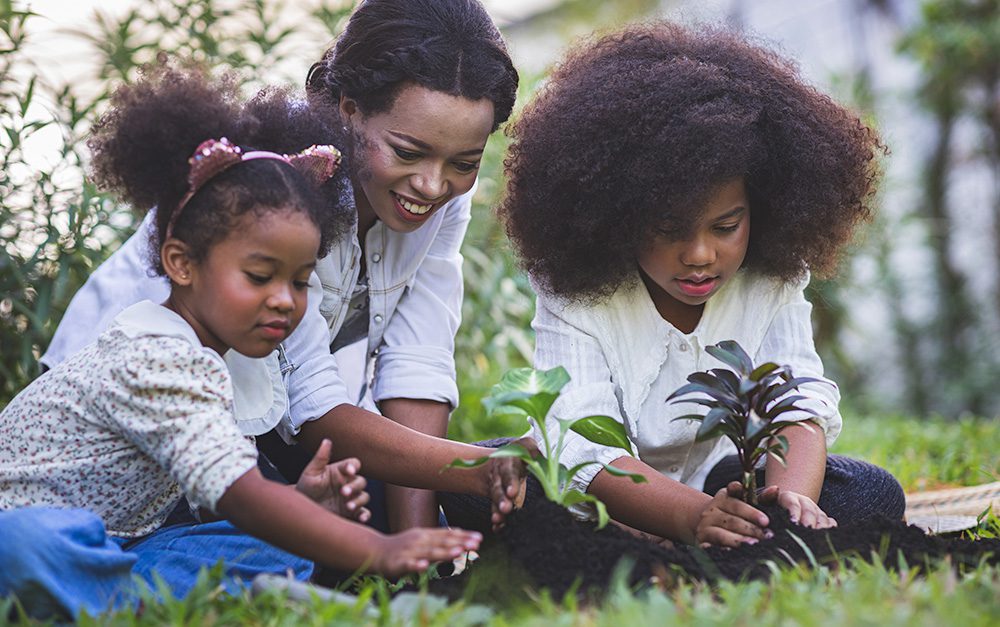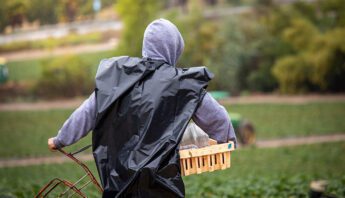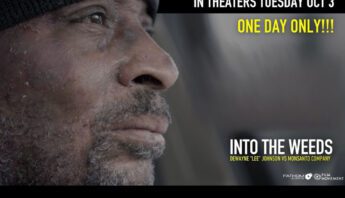By Nsedu Obot Witherpsoon and Eddy Daniel
All children have the right to live and thrive in a healthy and safe environment. This right is currently under threat in an environment filled with many toxic chemicals. These chemicals make their way into our children’s bodies and threaten their health. Primary among them are the dangerous pesticides prevalent in our world today.
For the last 23 years I have served as the Executive Director of the Children’s Environmental Health Network (CEHN). We are a national non-profit organization, with the mission to protect all children, all over the world, equitably from environmental threats. I have also had the honor to serve as a board member for PAN over the last 11 years, completing time as the board’s most recent past chair.
It is clear to me that children are not afforded the opportunity to decide the zip codes that they are born into and grow up in. They do not get to decide what public health standards and state policies get enacted to advance their physical and mental health. Those heavy responsibilities land on our collective shoulders to either act against or further perpetuate the cycles of injustice that have plagued generations.
Children and pesticides
Pesticides can be found in our water, air, soil, food, homes, and public spaces. Available research has shown that, unlike adults, children are more vulnerable to pesticides, while having the greatest exposure to these chemicals. Children have faster metabolisms and a hand-to-mouth tendency, increasing their exposure levels, while their small size and developing organs make even limited doses dangerous. Pesticide exposure has been linked to numerous health issues in children, including certain forms of cancer, respiratory challenges, and reproductive and developmental problems.
CEHN, the Childhood Cancer Prevention Initiative, and the Cancer Free Economy Network contributed to the report Childhood Cancer: Cross-Sector Strategies for Prevention. According to the report, “over 46 children per day (more than 16,000 children per year) were diagnosed with cancer as of 2019,” in the United States. The report identifies pesticides as one of the three environmental chemical categories contributing to the consistently rising rates of childhood cancers.
Children at the Center
CEHN has been at the center of children’s environmental health protection for over 30 years, working to protect children from exposure to toxic chemicals, such as pesticides.. The organization has been championing change across three core areas: research, education and training, and child-protective policy.
In the United States, most children, ranging from infants to age 6, spend over 40 hours weekly in childhood education (ECE) facilities. CEHN partners with childcare professionals to reduce children’s exposure to pesticides and other toxic chemicals in childcare settings through its award-winning national program, Eco-Healthy Child Care® (EHCC). CEHN also addresses health disparities in children’s health, which have increased children’s risk of exposure to pesticides in the environment.
CEHN is a co-chair for the America the Beautiful for All Coalition, working to protect 30% of our lands and waters by 2030, where at least 40% of those protected areas will benefit the most marginalised. We launched the 2023 policy platform priorities in January and will provide an update in our 2024 policy platform. Integrated pest management and protections from pesticides are among the priorities emphasized in the platform.
A major accomplishment by CEHN and partners (including PAN) has been the push for the effective implementation of the 1996 Food Quality Protection Act. This pesticide reform bill provides protection for children by reducing tolerance levels for pesticides on food products.
What we can do
There is a need to eliminate pesticides from the environment to protect children’s health. And, organizations like Pesticide Action Network (PAN) North America and Children’s Environmental Health Network (CEHN) have been at the forefront of this work.
PAN has worked for years to reduce the children’s exposure to pesticides. They produced the Kids on the Frontline resource, which clearly outlines the threat pesticides present to children. PAN also works to stop pesticide drift. Their In Case of Drift Toolkit is updated regularly and provides resources for those who may be victims of pesticide misapplication..
Using grassroots science and coalition organising, PAN promotes immediate and long-term changes to protect farmers and communities from harms created by pesticide-intensive farm and food systems. PAN continues to advocate for policy change that supports agroecology and more protective policies when it comes to pesticide use, which, in turn, will help protect children. And, PAN participates in lawsuits to remind the EPA and USDA to do their jobs and effectively regulate the dangerous pesticides.
Effective policies and policy changes are crucial to systemic change as we move to eliminating dangerous pesticides from the environment. CEHN and PAN will continue to advocate for an evidence-based child-protective policy. Pressures and actions from individuals and organisations such as PAN, CEHN, and our networks, have brought about some policy changes regarding pesticide use, but we are working to make more headway,. both in the United States and across the globe.
The Protect America’s Children from Toxic Pesticides Act (PACTPA) is an example of some of the most effective policies needed to protect children’s health and the environment from pesticide exposure. PACTPA would restructure pesticide regulations in the United States.. You can take action by telling your representatives, in both the House and the Senate, that you believe the health of our children is important, and that more needs to be done to protect them from pesticides.
Celebrate Children’s Environmental Health Day with us
We are celebrating Children’s Environmental Health (CEH) Day this Thursday, October 12, 2023. Join PAN, CEHN, and other CEH Day Partners to raise awareness of children’s environmental health issues and take action to protect children’s health. You can get involved by requesting a city or state proclamation, spreading awareness, writing to your representatives, or sharing your CEH champion story.
PAN and CEHN’s accomplishments over the years show that positive change can be made. Together, we can make a difference and ensure that we do not fail our next generations. Instead, we can work together to promote their wellness and health!








